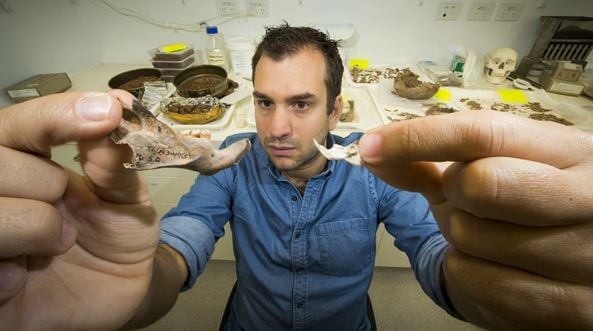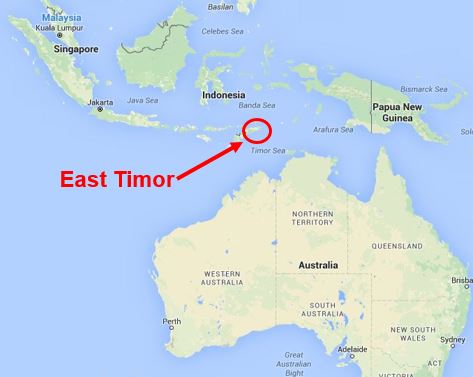In the past, rats used to be up to ten times the size of rats today, say archeologists from The Australian National University (ANU) who discovered the fossils of seven mega-rat species on East Timor (some islands between Australia and Indonesia).
Dr. Julien Louys, who works at ANU’s School of Culture, History and Language, and is helping lead the study, said these are the largest rats to have ever existed (as far as we know).
They weighed as much as a modern miniature dachshund or Boston terrier. At up to five kilos in weight, they were much heavier than domestic cats today (3.6 to 4.5 kilos).
 Dr. Louys holding the jaw bone of a giant rat species discovered on East Timor, and comparing it with the same bone of a modern rat. (Image: Stuart Hay, ANU)
Dr. Louys holding the jaw bone of a giant rat species discovered on East Timor, and comparing it with the same bone of a modern rat. (Image: Stuart Hay, ANU)
Examples of mega-fauna
Dr. Louys said:
“They are what you would call mega-fauna. The biggest one is about five kilos, the size of a small dog. Just to put that in perspective, a large modern rat would be about half a kilo.”
This study forms part of the From Sunda to Sahul project which is trying to find the earliest human movement through Southeast Asia. Scientists are now trying to determine why the giant rats became extinct.
According to Dr. Louys, humans on East Timor inhabited the islands up to 46,000 years ago. They lived with these extremely large rats for several thousand years.
Perhaps deforestation drove the rats out
Dr. Louys said:
“We know they’re eating the giant rats because we have found bones with cut and burn marks. The funny thing is that they are co-existing up until about a thousand years ago.”
“The reason we think they became extinct is because that was when metal tools started to be introduced in Timor, people could start to clear forests at a much larger scale.”
 East Timor (between Indonesia and Australia) comprises the eastern half of the island of Timor, plus the nearby islands of Atauro and Jaco, and Oecusse, an exclave on the northwestern side of the Island, within Indonesian West Timor.
East Timor (between Indonesia and Australia) comprises the eastern half of the island of Timor, plus the nearby islands of Atauro and Jaco, and Oecusse, an exclave on the northwestern side of the Island, within Indonesian West Timor.
The research team hopes to soon find out when humans first moved through the southeast Asian islands, how they traveled, and what impact they may have had on the ecosystems.
This information can then be used by those involved in modern conservation efforts.
Dr. Louys said:
“We’re trying to find the earliest human records as well as what was there before humans arrived. Once we know what was there before humans got there, we see what type of impact they had.”
Dr. Louys returned from his latest East Timor expedition in August and presented his team’s findings at the Meetings of the Society of Vertebrate Palaeontology in Dallas, Texas.
The project forms part of Sue O’Connor’s ARC Laureate ‘From Sunda to Sahul: Understanding Modern Human Dispersal, Adaptation and Behaviour en route to Australia’.
